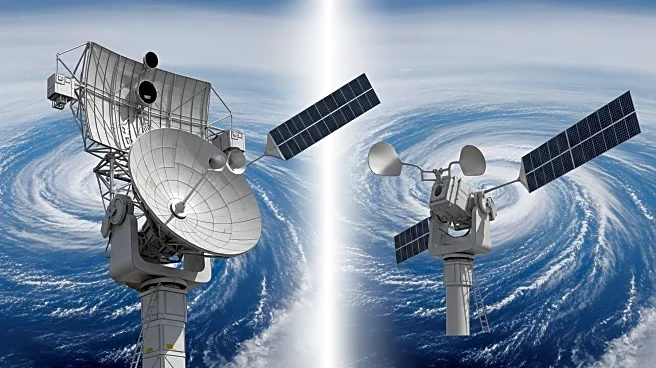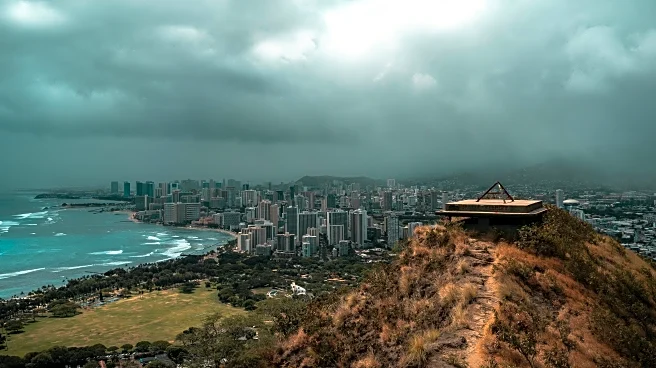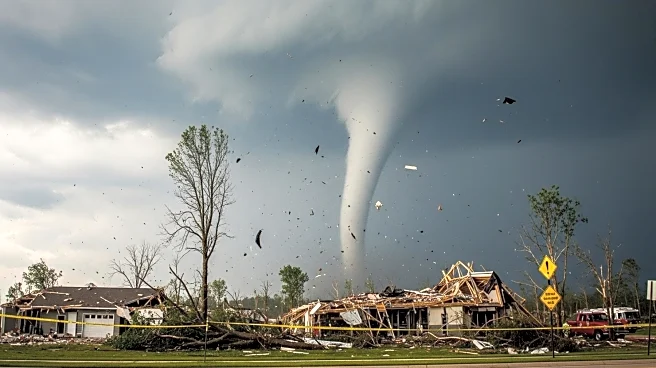What's Happening?
The National Hurricane Center is closely monitoring an area of disorganized showers and thunderstorms in the Atlantic Ocean, which could develop into a tropical depression later in the week of September 15, 2025. This potential storm could end a period of relative calm in the Atlantic during the peak of hurricane season. The system is expected to move west-northwest at 10 to 15 mph, north of the northeastern Caribbean islands, with a 40% chance of development over 48 hours and an 80% chance over seven days. Meanwhile, Tropical Storm Mario has reformed in the Pacific Ocean near Mexico, with sustained winds of 60 mph. Mario is forecast to bring tropical moisture to Southern California, potentially causing flash flooding later in the week.
Why It's Important?
The development of a new tropical system in the Atlantic could have significant implications for regions prone to hurricanes, particularly as it coincides with the peak of hurricane season. The potential formation of a tropical storm named Gabrielle could impact areas in the northeastern Caribbean and possibly the U.S. East Coast, depending on its trajectory. In the Pacific, Tropical Storm Mario's interaction with a low-pressure area could lead to increased rainfall and flash flooding in Southern California, affecting local communities and infrastructure. These developments highlight the ongoing challenges posed by severe weather events and the importance of preparedness and monitoring.
What's Next?
The National Hurricane Center will continue to monitor the Atlantic system's development, providing updates on its potential formation and path. If the system becomes a tropical storm, it will be named Gabrielle. In the Pacific, Tropical Storm Mario is expected to weaken to a tropical depression by September 17, 2025. The National Weather Service in San Diego will keep a close watch on Mario's moisture impact, particularly the increased chances of rain in the region's mountains and deserts. Stakeholders, including emergency services and local governments, may need to prepare for potential flooding and other weather-related impacts.
Beyond the Headlines
The reformation of Tropical Storm Mario and the potential Atlantic storm underscore the complexities of weather patterns and the influence of climate change on storm activity. The interaction between Mario and other weather systems could serve as a case study for understanding the dynamics of tropical storms and their impact on different regions. Additionally, the increased frequency and intensity of storms may prompt discussions on climate resilience and adaptation strategies in vulnerable areas.













